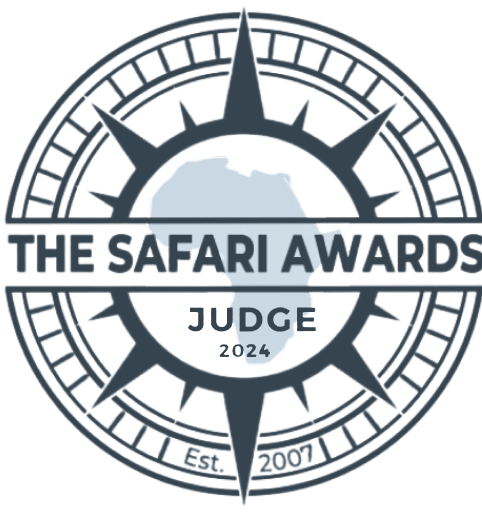Overview
The Rovos Rail African Trilogy journey is a marvellous 15-day sojourn that will engage with your imagination and curiosities! The train departs from Rovos Rail Station in Pretoria, making its way to the famed Kruger Park for a safari. Then it travels to the Kingdom of eSwatini (formerly Swaziland). Before making its way to Northern Zululand for a game drive in the Hluhluwe-Imfolozi Park. And then a tour of the city of Durban and its tropical botanical gardens.
Saying goodbye to KwaZulu Natal, the train traverses the Valley of a Thousand Hills and the breath-taking Drakensberg Mountains to the 1870s mining village of Kimberley. Passengers are then transported to a different world with the dry and arid Karoo, through Upington and onto the Fish River Canyon. Once in the Kalahari desert, guests visit Garas Park before they board a light aircraft for Sossussvlei where they will overnight at a lodge surrounded by the imposing dunes of the Namib-Naukluft Park.
Back on board, the train meanders to Windhoek and then into the game-rich Etosha National Park for another overnight stay. The journey ends in Walvis Bay.
Rovos Rail African Trilogy = Choice of Accommodation
Choose between TWO different compartment sizes, both en suite:
- Pullman suite (smallest compartment size),
- Deluxe suite (more spacious)
2025 Rovos Rail African Trilogy Departure dates
2025 Pretoria to Walvis Bay: 6-20 Feb, 2-16 Oct
Our Digital Itinerary
Use the scroll button to see the full itinerary.
The Rovos Rail African Trilogy Train Journey starts off at Rovos Rail Station in Pretoria. The train descends the spectacular Drakensberg Mountain escarpment on the way to the Kruger National Park.
19h30 – Dinner is served in the dining cars en route to Malelane. Dress: Formal
The famous Kruger Park has 2-million hectares of an unrivalled diversity of life forms. It is a world leader in advanced environmental management techniques and home to an impressive number of species, e.g. 336 species of trees, 49 species of fish, 34 species of amphibians, 114 species of reptiles, 507 species of birds and 147 species of mammals including the Big Five.
Enjoy an early-morning game drive in the park, followed by tea and lunch. You rejoin the train at Malelane, before it sets off towards the kingdom of eSwatini.
19h30 – Dinner is served in the dining cars. Dress: Formal
The tiny Kingdom of eSwatini (Swaziland) covers only 17 000km2, most of which is mountainous. For such a small country, it is surprising that it sustains two capital cities: Mbabane is the administrative capital and Lobamba is the royal and legislative capital. In April 2018, Swaziland changed its name to the Kingdom of eSwatini (meaning “place of the Swazi”) and is an absolute monarchy. It is landlocked and borders South Africa and Mozambique. At Swazi Candles, guests are invited to interact with the artisans as they make a variety of candles. Woodcarvings, colourful textiles and superb basketwork are also on display. Mantenga Lodge is nestled in the mountains overlooking ‘Execution Rock’. The village is a living museum of old traditions that represents a classic Swazi lifestyle during the 1850s.
After breakfast and border formalities with eSwatini, disembark at Mpaka for a visit to Swazi Candles and Mantenga Cultural Village with lunch at Mantenga Lodge.
19h30 – Dinner is served in the dining cars. Border formalities with South Africa. Dress: Formal
As the oldest proclaimed reserve in Africa, Hluhluwe consists of 960km² hilly topography and is known for its rich wildlife and conservation efforts. Enjoy a morning game drive in the park before returning to the train for lunch. The train then travels towards Empangeni.
19h30 – Dinner is served in the dining cars en route to Durban. Dress: Formal
Durban is the third largest city in South Africa and enjoys great importance due to its industry and very large port. Drive along the ‘Golden Mile’ promenade where numerous hotels and restaurants are situated.
Enjoy a tour of Durban and the botanical gardens. Transfer (±30 min) to Umhlanga for lunch. After returning to the train, it traverses the Valley of a Thousand Hills towards Ladysmith.
19h30 – Dinner is served in the dining cars. Dress: “Africa” Theme or Smart Casual
Traverse the Drakensberg Mountains, first named by the Voortrekkers who thought the unbroken chain of heavily weathered peaks reminded them of the spines on a dragon’s back, hence the name ‘Dragon Mountain’ or Drakensberg in Afrikaans. Pass some of the highest peaks at 3450m.
19h30 – Dinner is served in the dining cars. Dress: Formal
Enjoy a tour of Kimberley’s Diamond Mine Museum and the Big Hole. Capital of the Northern Cape, Kimberley is well known for the discovery of diamonds that led to its establishment in 1871.
13h00 – Lunch is served in the dining cars. The observation car will be leading the train until after tea.
Travel through the Karoo, a vast semi-desert region that was once an enormous inland sea. Over millions of years, volcanic matter was ground down and deposited as silt upon the seabed to form what geologists call the Karoo system.
19h30 – Dinner is served in the dining cars. Dress: Formal
The train travels into Upington on the Orange River. The Orange River is the longest river in South Africa (2432km/1511mi). It rises in the Drakensberg Mountains in Lesotho and flows westwards through South Africa to the Atlantic Ocean. It forms part of the borders between South Africa and Lesotho and South Africa and Namibia. Except for Upington, it does not pass through any major cities. Attorney General of the Cape, Sir Thomas Upington was principally responsible for liquidating the business activities of all the Orange River pirates and capturing their leader, Klaas Lucas. When the desperadoes were finally chased away in 1884, the town was founded on the banks of the Orange River and named in his honour.
Enjoy a morning excursion in Upington. At lunchtime, the train will depart for Namibia. Border formalities will take place en route.
19h30 – Dinner is served in the dining cars en route to Holoog. Dress: Formal
Enjoy a morning excursion to the Fish River Canyon. The Fish River rises in the centre of the country before flowing south into the Orange River on Namibia’s border with South Africa. It has formed the great Fish River Canyon – the largest canyon in the southern hemisphere and probably only second to Arizona’s Grand Canyon in terms of size. The vast rocky landscape breaks up into a series of spectacular cliffs. Its size is impressive: 161km long, up to 27km wide and almost 550m at its deepest.
In the early afternoon, the train travels along the southern reaches of the Kalahari Basin. Visit Garas Park (Quiver Trees), home to roughly 300 specimens of the Aloe dichotomy. The prehistoric trees have forked branches that reach up to 5m making for great photographic opportunities.
19h30 – Dinner is served in the dining cars. The train travels north through the Kalahari to Mariental. Dress: Formal
The dunes of the Namib Desert were created by sand carried by the wind from the coast of Namibia. The sand here is over five million years old and is red in colour due to its iron-oxide content. As the light changes during the day so does the appearance of the dunes’ characteristic colour allowing for interesting photographs at any time. The wind in the Sossusvlei area blows from all directions causing the sand to form a star shape with multiple arms, hence the name “star dunes”.
Transfer to the airstrip and depart in a light aircraft for a one-hour scenic flight to Sossusvlei. Enjoy an afternoon desert drive and a bush dinner after sunset. Overnight at the lodge. Dress: Casual
After an early wake-up call with tea and coffee, enjoy a desert drive with breakfast in the vlei. After checking out at the lodge, transfer to the airstrip and depart in a light aircraft for a one-hour flight to Windhoek, where you’ll have lunch and visit the Transport Museum. Situated in Namibia’s central highlands, Windhoek is an attractive city surrounded by clusters of hills and the impressive Auas and Eros Mountains. The Trans-Namib Transport Museum outlines Namibian transport history, particularly that of the railway. The Independence Memorial Museum focuses on the anti-colonial resistance and the national liberation struggle of Namibia.
19h30 – Dinner is served in the dining cars en route to Otjiwarongo. Dress: Formal
In the afternoon, visit a cheetah conservation project in Otjiwarongo. Founded in Namibia in 1990, the Cheetah Conservation Fund (CCF) is dedicated to saving the cheetah in the wild.
19h30 – Dinner is served in the dining cars en route to Otavi. Dress: Formal
Etosha National Park (22 270km²) offers great game viewing. It gets its name from the Etosha Pan (4 760km²), a large salt pan forming part of the Kalahari Basin. Etosha means ‘Great White Place’.
After breakfast, transfer (±60 min) to a lodge in Etosha for overnight. Check-in and enjoy lunch. In the afternoon, enjoy a game drive (±3 hours).
19h30 – Dinner and overnight at the lodge. Dress: Casual
Enjoy an early breakfast followed by a game drive at 07:00 in the Etosha National Park. Afterwards, return to the lodge for brunch, check out from the lodge and transfer back to the train.
19h30 – Dinner is served. The train travels southwest towards the Atlantic Ocean. Dress: “1920s” Theme or Smart Casual
The Namib Desert stretches for more than 2000km along the Atlantic coasts of Angola, Namibia and South Africa. The name is of Khoekhoegowab origin and means “vast place”. Having endured arid or semi-arid conditions for roughly 55-80 million years, the Namib may be the oldest desert in the world. The geology consists of sand seas near the coast while gravel plains and scattered mountain outcrops occur further inland.
Enjoy a final leisurely breakfast as you travel across the Namib Desert, arriving in Walvis Bay by 12 noon.
An idea of price
This is a set tour using specific camps. However many tours can be adapted. Chat to us about your options. It excludes international flights but includes an estimate for all domestic or regional flights within the tour.
Accommodation; all meals; all beverages on board; room service; limited laundry; excursions with a qualified guide (where applicable); entrance fees as per itinerary; government tax; flights to/from Sossusvlei; overnight bag.
EXCLUDESAll off-train beverages; international sparkling wine; gratuities; personal expenses; visas; travel insurance; pre- and post-tour transfers, accommodation and flights.; items of a personal nature

Sonja Brand
AFRICAN TRAVEL SPECIALIST


















